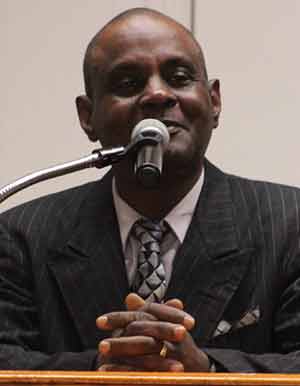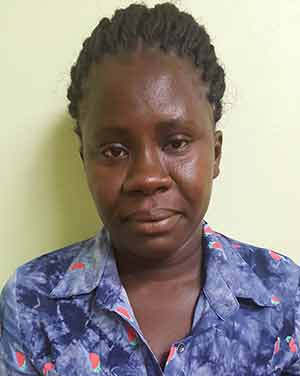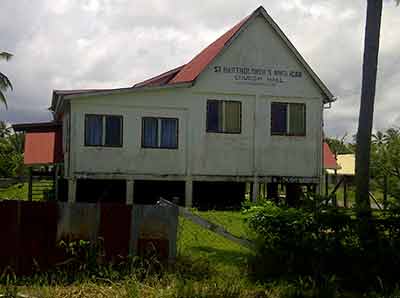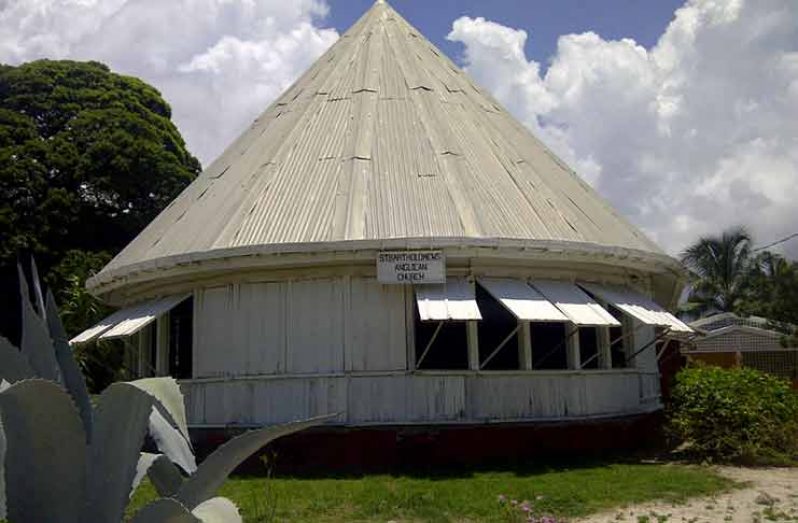By Indrawattie Natram
IF one were to traverse the Pomeroon-Supenaam Region, they would find many communities with rich legacies and historical significance.
One such community is Queenstown, Essequibo. Nestled between the closely-knit villages of Little Alliance and La Union, this is a beautiful, well-populated and family-oriented village which was named on September 25, 1841 after Queen Victoria.

Existing for approximately 178 years, Queenstown is probably the largest and oldest community on the Essequibo Coast with the greatest number of historic buildings that still stand tall.
Interestingly, what makes this village even more famous is the St Bartholomew Anglican Church that was constructed in 1849 and was originally a coffee logie. This historic building is located in the middle of the village and was built by the slaves themselves. According to the villagers, the building was once a primary school.
The village is divided into three sections: Mocha, West Field and Dageraad within which are located three plantations, first owned by Mr Carberry, the first slave owner to purchase a plantation in then British Guiana. At the end of the apprenticeship period, slaves pooled their resources and purchased lands in the three areas. History has shown that in 1847, the Queenstown Village Council was formed where persons worked tediously to build a strong economic base through Agriculture.
DEVELOPMENT
Children in the village began to receive a firm education in 1849 by efforts of the Anglicans. In 1892, Queenstown boasted a fully elected local government with overseers, and in 1961 the normal educational institute was established by Edwin Burnett.

Today, the community is fully equipped with several modern amenities, including a community centre, health centre, post office, village office, play field, a primary school, a nursery school, the popular Urbayne Oasis Hotel and lots of pubs. The community is also equipped with a recently commissioned ICT hub which affords residents and school children access to the internet. Persons are utilising the hub for their own benefit and some are even using it to seek employment.
MEMORIES GROWING UP IN QUEENSTOWN
Clyde Fortune, a pastor from Queenstown recounted life growing up in the village. Although Pastor Fortune currently resides in the United States of America, he has fond memories growing up in Queenstown and recounted the togetherness that villagers shared in the past.
“Life growing up in Queenstown was amazing and wonderful, we had such fellowship and relationships, mingling together, playing the game of cricket and making bats from coconut branches and the monkey-apples tree wood,” Fortune fondly remembered. He said in the past children would gather at Cow Dam in the village to take a bath in the black water trenches. He also said that during the moonlight he recalled elders in the village gathering the children around “Broad Street” area to retell slavery stories and make jokes.

The pastor said he would give anything to relive such fun days. Fortune migrated after serving the Guyana Police Force (GPF) and lived in Antigua and St Maarten before moving to the USA where he now serves as a man of God.
Cromwell Mentis, a community leader, photographer and drummer said that he is proud to live in such a closely-knitted community. He said that over the past 16 years there has been tremendous progress from muddy dams to asphalt roads. He noted, too, that the community has managed to keep up-to-date with technology and that the youths are enjoying many recreational opportunities with the recently established “Hard Court”.
He said that employment opportunities are created within the village through many cottage industries, including the most recently established Juice and Power Shake Factory. Mentis, however, hopes that more jobs would be created for the young people since the community also suffers from brain drain, with the majority of youths venturing in the interior to take up mining.

Twenty-nine-year-old Diane Innis Fisher also recalled that whenever there is an Emancipation Day programme, there would be a week of activities organised by the Queenstown Development Association. She said persons from various communities used to visit Queenstown and that the children would be heavily involved in the event. Fisher wishes that such golden days could be relived and children in today’s society can experience same.
All in all, many residents feel the same pride and joy as they reminisce on the memories of growing up in Queenstown and are pleased with the developments that have taken place over the years. They look forward to even more developments that are likely to take place as time goes on.



.jpg)









